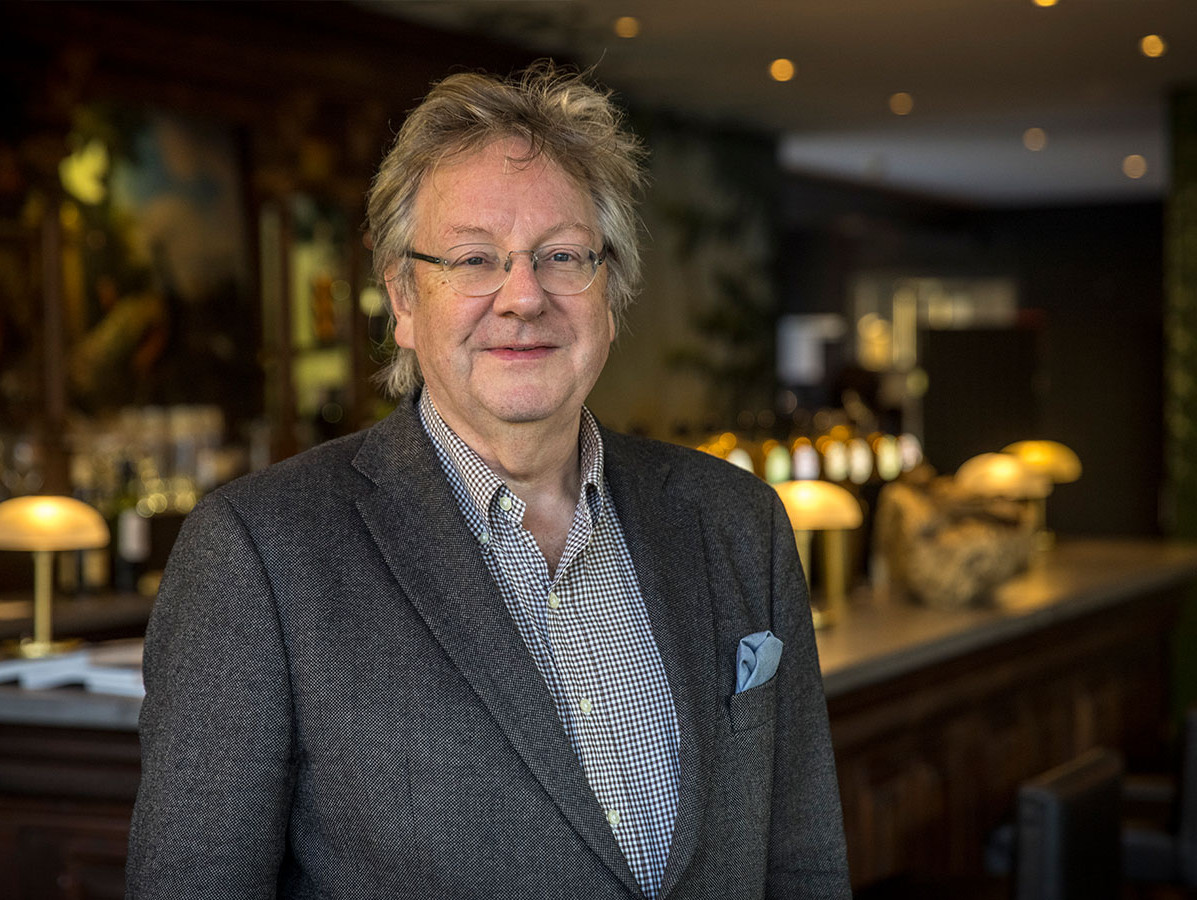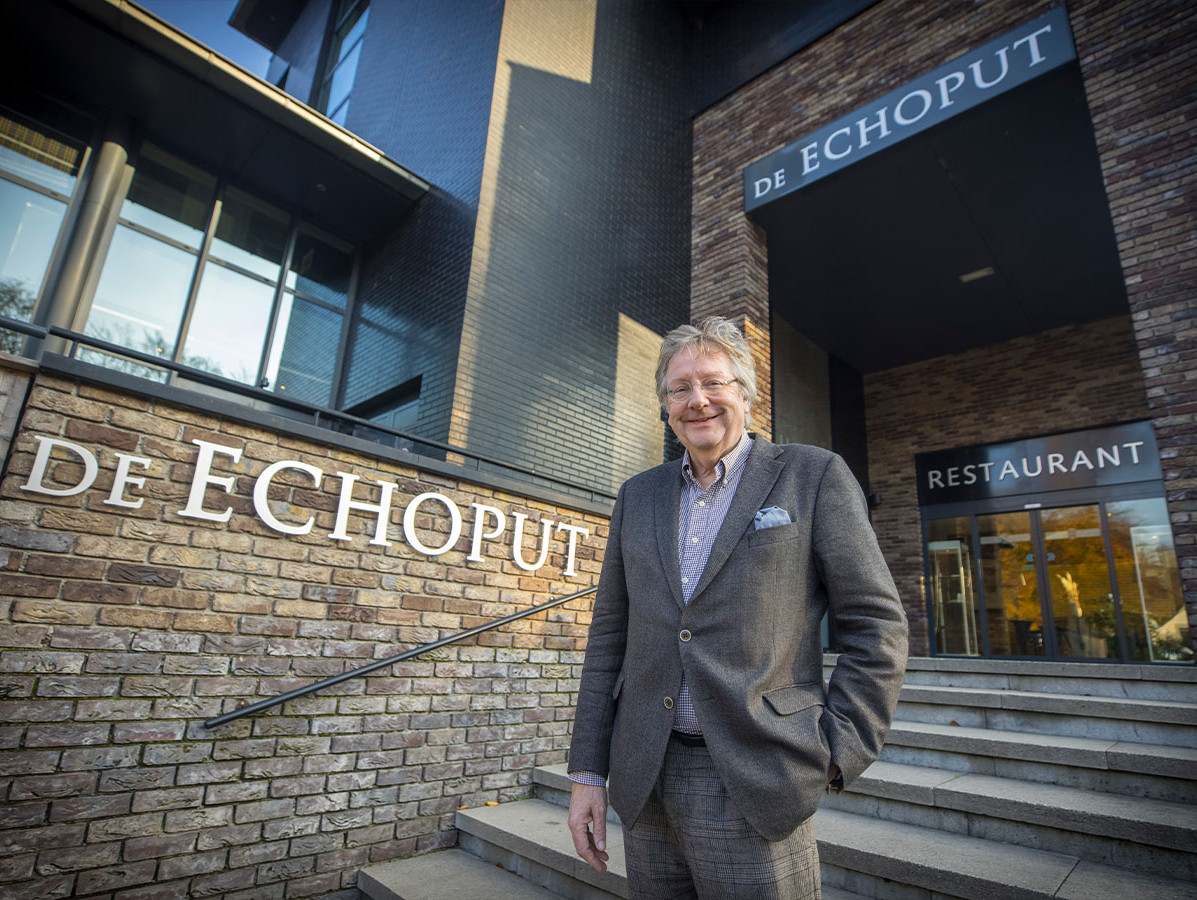
Fact: coffee tastes different from a sandwich or an apple. "Tastes differ, but taste by itself is what it is. It exists, even if you haven't tasted it yet." Scientifically speaking, the phenomenon of 'taste' is still in its infancy, but there is no arguing about one aspect, according to taste professor Peter Klosse: "For a product innovation to have a chance of success, it will have to be really tasteful"
We are sitting opposite each other in restaurant de Echoput near Apeldoorn, Peter Klosse's home base. I take a sip of the cappuccino in front of me. "Tasty?" he asks. In his eyes a happy twinkle, which remains there for almost the entire interview. Not surprisingly; he gets to talk for an hour about his favourite subject: taste.
"Of course, I didn't start out with 'I want to be the big taste wizard'," he explains. "I just considered wine and food to be interesting, I have a fascination with taste and was teaching about it. Students, readers of my books and sommeliers found it interesting, understood it and were able to apply it. But I also got critical questions: 'Is it true what you say? Has it been validated? Is it scientifically correct?' Those questions intrigued me and prompted me to pursue a PhD on the topic of taste."
He grabs a biscuit from a platter and takes a bite. Crunchy I hear. Fresh, in other words.
"Taste is a phenomenon, comparable to colour, or sound. Red is red. It is an established part of the colour spectrum and it is like that all over the world. You can like sound or find it unpleasant, experience it as loud or quiet, even not hear it if you are deaf. Yet it remains measurable in decibels. This is how we should see taste. The challenge is: how do you describe and measure that phenomenon? What terms do we need then?"
"Indeed, that's how it's still written in the textbooks. These basic terms fail to do taste justice. Because: can you use them to describe the coffee in front of us now? From the description of the basic flavours, you wouldn't be able to know whether it's about tea, coffee, tonic, or liqueur. They can all be bitter. Our conceptual framework for taste, because of its limitations, is not suitable for describing and distinguishing products."
"What struck me as strange was that food technologists are looking at carbs, proteins, water, minerals and fats a lot. These macromolecules, on which the whole composition of what we eat and drink is based, did not factor into describing taste. That is very strange. When you consider that, you can't help but reach a certain degree of bewilderment, can you?" A happy laugh follows.
"Well, there's only one answer to that: very different. So that doesn't get us anywhere. The question is: do they have something in common? And that's when you get a fascinating answer! Especially the éffect of proteins, fats, carbohydrates and minerals in the mouth is very interesting; that's what we actually taste. It is amazing how the things we really taste are not part of how we describe taste".
"We are very much working on that. I used to be bolder and would have said 'yes'. Now I'm a bit more cautious about that. It is potentially measurable, because it is objectifiable. I consider mouthfeel to be the connecting concept between taste and texture; the integration of these terms that are often used individually. The same molecules responsible for sweet, salty, bitter and sour sensations also have mouthfeel effects. After much research, we now distinguish taut, filmy, drying and flavour richness as the four main components of mouthfeel. Using these key components in our mouthfeel model, it is possible to describe all food products. Together, they define the taste profile. Deepening and refining the model is an ongoing process. Due to the integral and complex nature of the model, it sometimes takes longer than I had hoped."

"More and more. Since 2018, I have started the T.A.S.T.E. foundation where we work closely with both academia and professionals. It is starting to get more and more traction. Indeed, analytical equipment is getting better, and the need to produce healthier products is high. An analytics-driven approach often gives innovation a greater chance of success."
"We need to make different choices. This is complicated by a fundamental lack of knowledge; especially about how nature works. We have strayed too much from natural processes. Meanwhile, people's ignorance is much abused. That bothers me. Almost everything we think we know about nutrition is what the industry tells us and presents to us. A lot of nonsense is told in advertisements. Next I hear a story and think: where do you get that? What are you talking about?"
"A second point is that unhealthy food, such as fast food and snacks, is strongly associated with 'tasty' and what is called 'healthy food' with 'un-tasty'. What and the way we eat now is not good for humans, and not good for the planet. Changing this for the sake of society, the world or your own health, is far from easy; especially when the 'alternatives' are found to be unappetising. So when talking about product innovation, one thing is clear to me: the improved food for people and planet will have to be delicious! Convenient Affordable and Tasty, or CAT: that is the core principle. Is the improved alternative less convenient, affordable or tasty? Then we will not consume it."
"First of all, flavour must return to agriculture and animal breeding. Quality has to go up, so fewer additives are needed to make food tasty. Furthermore, it is important to realise that with everything you buy and do, you are casting a vote on a particular system. If you buy or produce a plump chicken, you are thereby supporting the plump chicken industry. If you don't want to, then the only thing that works is: don't buy or produce that chicken. This movement is in progress. Organic and more sustainably grown vegetables are on the rise, so is meat with a 'Beter Leven' quality mark, and tastier plant-based alternatives are emerging."
"Many companies are wondering if they are ready for the change, call it 'Plan B'. Plan A is what they do now: produce cheaply, aiming for profit. They make a lot of money doing that. The shareholders are happy, shareholder value is great, so they keep doing that. However, as soon as it turns out that Plan B is more profitable, the industry switches en masse. Taste plays an essential role in this. And this is my appeal to the food industry: make sure the alternatives are affordable and healthy for people and planet. But above all: make sure they taste good!"
"No, definitely not!" The twinkle in his eyes is back. "Yes, my generation got a lot wrong. Our young people are stuck with the problems. I want to help them find solutions. One of the reasons I love teaching is that I find it incredibly rewarding to inspire young people. It is wonderful to see that a large group is still hopeful and positive about life. Changing the system is easier than a lot of people think. It all starts small. Every little step makes a difference."
Source: Vakblad Voedingsindustrie 2023